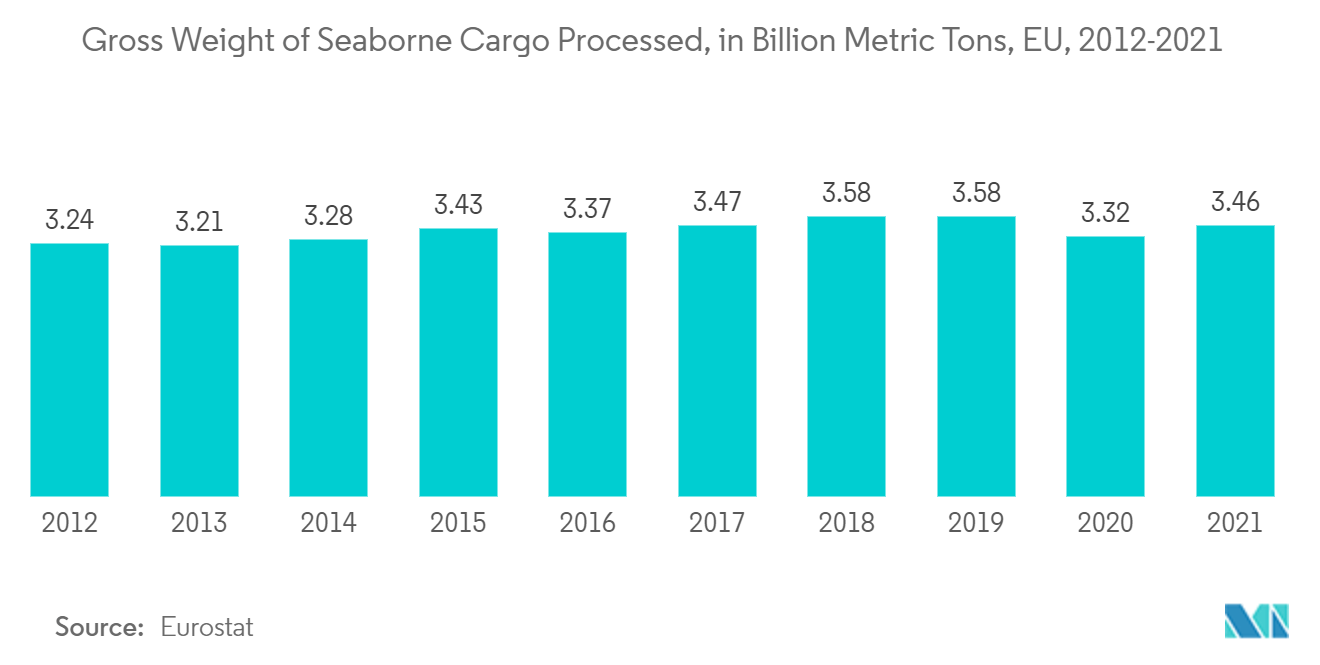Market Trends of Europe Stevedoring and Marine Cargo Handling Industry
This section covers the major market trends shaping the Europe Stevedoring & Marine Cargo Handling Market according to our research experts:
Rise in Demand for Maritime Trade
According to the European Maritime Transport Environment report, maritime transport plays and will continue to play an essential role in global and European trade and economy. The EU maritime transport sector employs around 230 000 people, and European shipping accounts for over 40 % of the world's fleet.
The EU has some of the world's largest maritime clusters. With 77% of European external trade and 35% of all trade by value between EU Member States moved by sea, maritime transport is a key part of the international supply chain. Despite a drop in shipping activity in 2020 due to the effects of the COVID-19 pandemic, the sector is expected to grow strongly over the coming decades, fueled by rising demand for primary resources and container shipping.
The Netherlands handled the largest volume of seaborne goods in the European Union (EU-27) in 2021. According to Eurostat, in the year 2021, nearly 590 million metric tons of cargo passed through Dutch ports, mainly through the Port of Rotterdam. The Port of Rotterdam is the biggest container port in Europe and one of the largest container ports in the world.
Nowadays, ships carry more than half the value of goods imported to the EU and over 40 percent of goods are exported from the EU. In 2021, about 1.1 trillion euros worth of goods were imported to the EU, and about 956 billion euros worth of cargo was exported from the EU by sea. All these activities have been increased at the port. So these factors boost the demand for the stevedoring and marine cargo handling market in Europe during the forecast period.

Increasing Container Handling Services
Maritime shipping has been a vital mode of transportation for European countries for centuries. This fact has not changed with the establishment of the European Union (EU) and its subsequent enlargements. On the contrary, shipping remains one of the most important means of trade for the Member States of the EU. In 2021, nearly 3.5 billion metric tons of seaborne cargo was processed at ports in the European Union (EU-27) according to Eurostat data. This represents an increase of more than four percent compared with the previous year. In 2020, only about 3.3 billion metric tons of cargo passed through the ports in the EU, reflecting the problems the global supply chain was facing amid the COVID-19 pandemic.
The Port of Rotterdam in the Netherlands handles the heaviest pressure influx of European trade and commerce. Highest amongst the 10 biggest ports in Europe, Rotterdam has bulk liquid cargo handling 192 million metric tons. Total throughput of almost 437 million MT of cargo also contains 192 million MT of liquid cargo. Over 151 million MT of container goods handling is a standard demonstration of the port's ability. The port sees an average of 28 thousand sea-going vessels and well over 90 thousand in-land vessels annually.
The stevedoring and marine cargo handling services are expected to increase during the forecast period because of the increasing size of vessels, which enhances the complexities of the stevedoring process at ports. Stevedoring operation has the largest share in terminal operations, and this segment will continue to be the revenue-generating segment for port and terminal operators.


